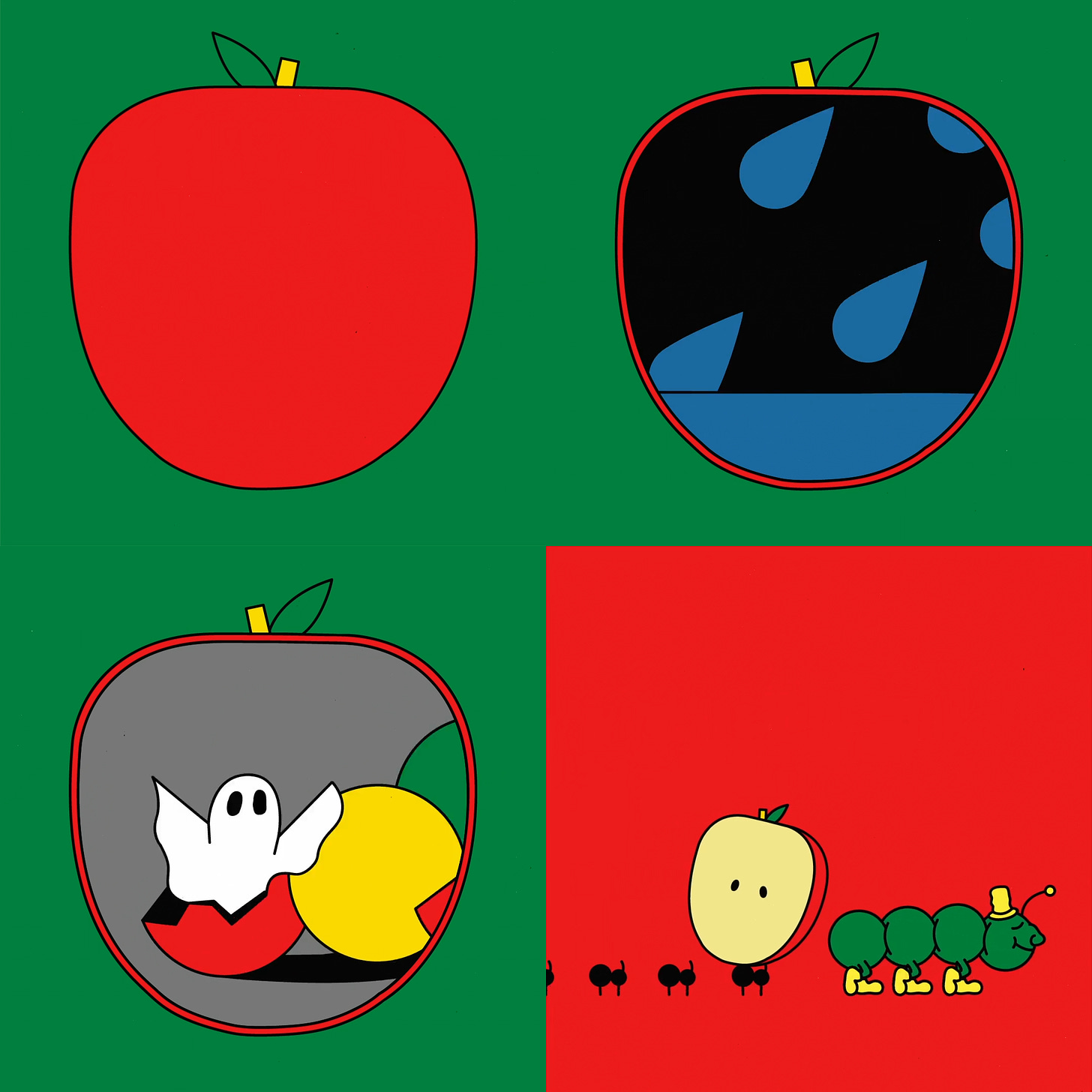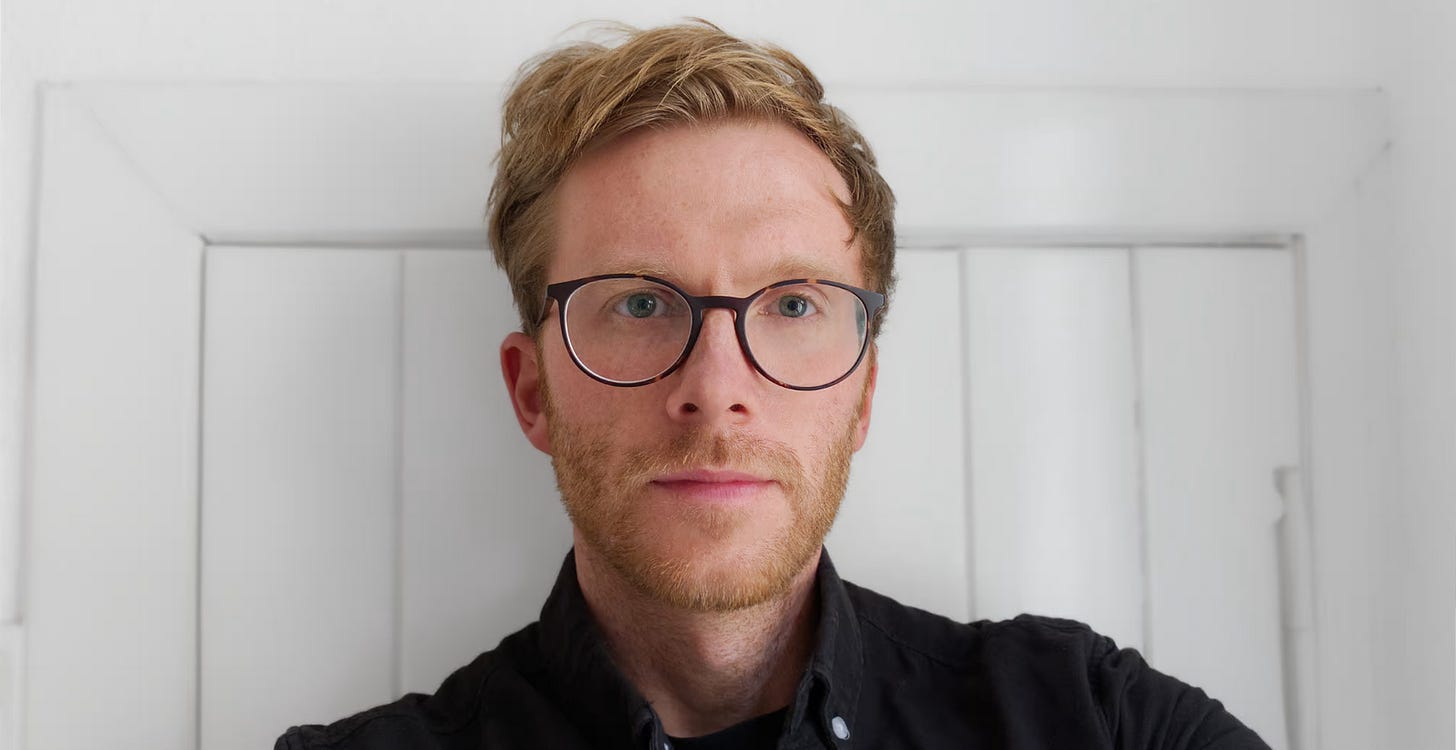'I Tend to Have a Gut Feeling About the Right Approach'
Chatting with veteran composer and sound designer David Kamp.
Happy Thursday! In this issue of the Animation Obsessive newsletter, our topic is a bit different than we’ve ever explored before: the art of audio for animation.
We’re talking to David Kamp, a talented composer and sound designer based in Berlin. His projects have a list of awards so long that it’s almost intimidating. Kamp has worked with clients like The New Yorker, CNN and Disney — but he’s maybe best known for auteur animation. If you follow the festival circuit, you’ve heard his stuff.
Kamp himself supplied the idea for today’s issue. Back in May, he emailed us to suggest “sound for animation [as] a subject in the future.” We loved it — so, we exchanged emails over the course of a few months, and this interview was born.
Kamp’s been doing audio for animation since the 2000s. Rich, crisp tactility is his trademark. He composes both sound and music “close to picture,” as he told us — his soundscapes have a quality akin to synesthesia. It’s something that drew us to Chromosphere’s My Moon (2018) before we’d even looked into the rest of Kamp’s work.
Below, Kamp tells us about his process and philosophy for audio. We learned a lot — and we think you will, too. Enjoy!
Animation Obsessive: How did you get started in this line of work?
David Kamp: I studied electronic music composition, sound engineering and music theory at Folkwang University of the Arts [in Germany]. The school had a strong avant-garde focus; my teachers’ heroes were “new music” composers like Stockhausen and Ligeti. While studying, I learned how to design, compose, synthesize and mix all sorts of sounds, but it was not a degree in sound for picture like the very specialized film scoring courses today.
In my final year, I randomly came across a few animated short films, and it clicked that I wanted to focus on sound for animation. What drew me into animation was that it represented a way to creatively apply all the sound design and musical composition techniques I’d learned, usually starting from scratch since animation rarely has any sounds to begin with.
This blank slate fascinated me and still does; I love how every animated film I work on requires a unique sound world that can be anything — from realistic to entirely abstract — as long as the sound is consistent within its own rules. The variety of sounds and musical elements I get to design for the animated films I work on and the determination, craft and imagination of the animation directors I work with excite and inspire me the most.
When you begin a new project, what’s the first step you take in deciding the tonal palette for the audio?
At this stage, I tend to have a gut feeling about the right approach, and I start by doing some exploratory sound sketches, which I then show to the director(s) to see if they resonate with them.

Every project is different, and sometimes the opposite of the obvious thing to do is the right approach: sometimes, a very minimalist, abstract and reduced animation works with an equally reduced, stylized approach to sound; other times, sound can counterpoint the minimalism by adding realism, texture, detail and depth with more complex and layered sounds.
On some projects, I’ve focused on getting the most expression using the least amount of sound elements. A good example of minimalism in my sound design is one of my earliest projects, David O’Reilly’s Please Say Something (2009). Here the footstep sounds are a very short, digital click that is literally just copy-pasted to sync. For this film, that reduction worked perfectly; on others it would have felt very wrong.
When you’re using a more emotional or abstract style of sound design — rather than creating a literal or realistic accompaniment to the picture — where do you find the inspiration to match certain sounds and visuals?
The nice thing about sound is that it is possible to try things and do rough sketches very fast, especially compared to the time it takes to animate anything. Much of it is intuition and gut feeling, and I can’t pinpoint exactly where I get my inspiration.
Usually, I try things that I think might work, and, once something feels like it has a lot of potential, I go deeper in that direction. Arriving at the final mix of course takes time, but, luckily, the early exploration of ideas can be done pretty quickly.
As someone who works as both a Foley artist/sound designer and a composer, what do you find in common between the two disciplines? Do you feel like they’re two sides of the same coin?
I like being both simultaneously, since I can switch hats as I go. Having worked in both areas, it’s easier for me to figure out what should be the focus of each moment of a film.
Traditionally, the role of film music has been to “add emotion” and change the audience’s perception of whatever happens visually, but the historical separation between what is music and what is sound design is converging. The two disciplines complement each other very well: music is more abstract by nature and sound design/Foley usually less so, and usually closely tied to picture.

However, today’s film music is often composed very close to picture, too, and sound design or Foley can have musical qualities as well. For example, the “ding” of cutlery, or of a rock hitting a metal pipe, is a sound with a pitch and resonance that can consist of two notes. Those two notes might then form an interval that adds tension or relief depending on what we want to achieve at that moment of the film.
If there is a musical score, our metal pipe could either be harmonically in tune with the music and blend in, or it could be detuned, unexpected, and throw us off, drawing attention to itself. It’s crucial to be conscious of these effects and handle them in a way that serves the film’s intentions.
These areas where the two disciplines merge, and it’s hard to tell what is what, are very interesting to me.
That technique of tuning sounds to subtly accent the music is fascinating. Can you give us some examples of when and how you’ve employed that in your work?
To some degree, I do that in most of the projects I work on. And I’d say it’s not only about pitch and tuning, actually.
When too many of the defining properties of a sound (like pitch, level, duration, rhythm, timbre) don’t match those of another sound playing simultaneously, they tend to clash and sound harmonically “wrong” by default. Sometimes that is exactly the effect we want; sometimes it’s not.
I try to be very conscious of how all the sounds I use work together towards whatever feeling or mood should be expressed, and steer them in that direction.
One project where I pushed the approach of harmonious and rhythmic sound effects pretty far is the film Island (2017). Throughout that film, the sound effects become increasingly “musical” until they basically turn into a song. Sound also guided the animation timing, editing and even character design:
Let’s not pretend I invented this approach of blurring the lines between music and sound, though. Sound designers did it in one way or another from the beginning of sound in film, especially in some of the early cartoons. It really helps me to think like that about all sounds, not necessarily always pushing into very obvious territory like I did in Island. But having a musical background really helps with sound design.
How many iterations of a single sound do you tend to go through as you search for, or refine, what you want?
Hard to tell for a single sound since most sound elements I create are a blend of multiple layers, each serving a different purpose. For example, one layer might be there to add a specific texture and create “believability” with picture, while another layer might be something that gives it a specific musical pitch.
I keep all those layers separate until the final mix, so, even then, I can go in and change the blend of all sound elements if need be.
You mentioned you use blends of multiple layers for sounds — could you elaborate a bit on your process and pipeline for creating sound elements?
Usually, I just start creating, stacking and combining sound elements until I arrive at a blend I like. Creating can mean recording sounds, synthesizing them from scratch or processing existing sounds. I recorded a lot of my own sounds in the past.

At times, I also go backward in the layering process and try muting individual layers. Sometimes less is more, and we can better focus on the important layers by removing less essential ones. Removing layers can be a bit like increasing contrast in a photo, or removing the “gray.” In the end, this is similar to how mixing works in music production: the goal is often to give each instrument its spatial position and “niche” on the frequency spectrum, to shine without fighting for attention with the others.
Lastly, can you talk about anything you’re working on right now?
Many different things. I am finalizing a new film project with the artist Ed Atkins which will be part of his upcoming exhibitions later in the year. Last week, I wrapped the 5.1 theatrical mix of the animated short Salvation Has No Name by Joseph Wallace, where I handled all audio except for the music. The film was primarily shot at Aardman Studios in Bristol and involved the legendary stop-motion animator Tim Allen.
Later this year, I’ll be in New York to do the final mix for one of my biggest projects yet, a commission by a museum. It’s a very ambitious animated film about “nature,” with 360° projection and a 52-channel immersive soundscape, that will be presented as the main show in their new building. I also have a few new animated shorts touring the festival circuit right now, including films by Nikita Diakur, Sean Buckelew and Réka Bucsi.
I really enjoy the wide variety of projects I get to work on with filmmakers and artists whose work I admire — excited to see what’s next!
Our thanks to Kamp for taking time out of his busy schedule to chat with us. We’re very happy with how this issue turned out. To hear more of Kamp’s music and sound design, visit his personal site.
This is the third interview we’ve published in 2022. Earlier this year, we talked to Ian Worthington (Bigtop Burger) about his Blender process — and with the legendary R. O. Blechman in a lengthy, two-part discussion. We hope to do a few more before the year is out, so stay tuned.
See you again soon!





Fascinating and beautifully edited issue! Kamp seems everywhere—I didn't realize how much exposure I've had to his work over the years, and in some of the most interesting films I've seen (e.g., Please Say Something). The bit about layering/adding/taking away in the process of building felt familiar; echoes in the design/animation realm. Hope we see even more interviews in the future—thoroughly enjoyed, thank you.